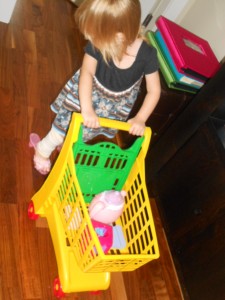Nursery rhymes are an educational resource that’s been supplying fun and learning for almost 5 centuries! Yesterday, on FB I read a post that it was Mother Goose’s birthday. That sounded interesting so I checked on-line. A quick search on Google had some fascinating references to possible origins of Mother Goose in different places of the world. Like the nursery rhymes themselves, there were many variations. But whether it really is Mother Goose’s birthday or not, nursery rhymes make a fun play-of-the-day.

Nursery rhymes connect kids to language. Often, kids can remember and repeat them after hearing them only a few times because the sounds and the rhythm follow a pattern. The patterns give clues to help brains remember.
Nursery rhymes are also a tool to help develop listening skills. Because they are quite different from ordinary, regular speaking, they capture attention. When hearing them, kids will often turn their eyes to watch the speaker carefully and we can almost see their ears tuning it as well.
Some of the words in nursery rhymes are quite unusual. Even though we do not use such expressions as “in the meadow”, like the sheep in Little Boy Blue, they add to the vocabulary that kids know.
While children will not be able to rhyme words themselves until about the age of four or five years old, they need to hear lots and lots of words that are similar so they practice listening for the slight variations in words. Cat, fat, rat, sat, and mat all sound almost the same, except for a slight difference. Being able to hear those differences requires multiple exposure and stimulation.
For some fun and learning with your child, share some nursery rhymes and connect with generations of others. What ones do you remember?
